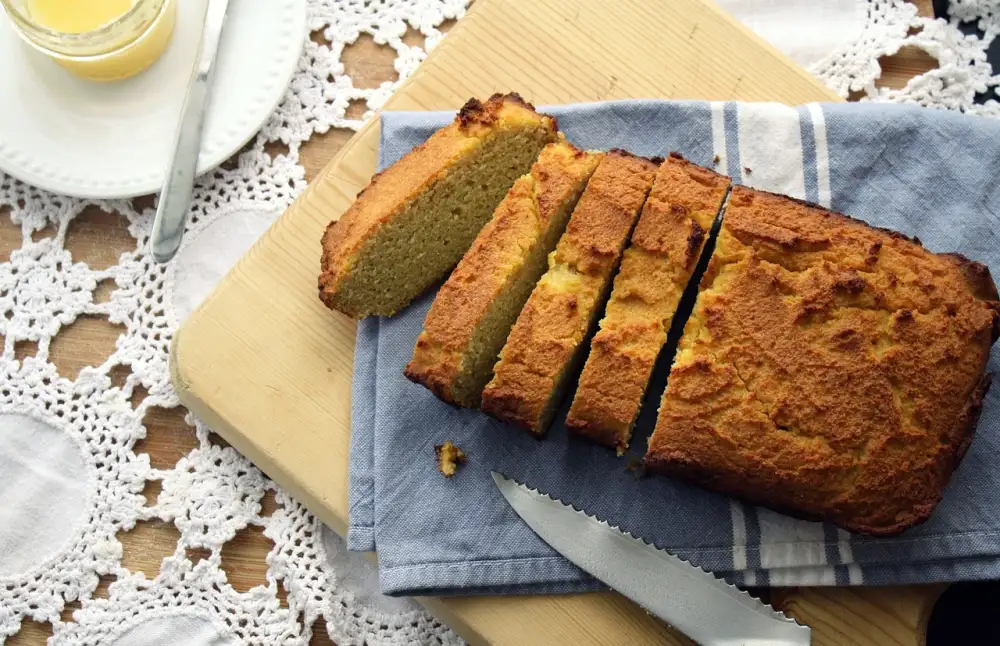Unlocking the Potential of Gluten-Free Flour: A Healthier Choice for Your Culinary Adventures

- Understanding Gluten and its Impact on Health
- Benefits of Gluten-Free Flour for Individuals with Gluten Sensitivity
- Exploring Different Types of Gluten-Free Flour
- Tips for Baking with Gluten-Free Flour
- Incorporating Gluten-Free Flour into a Healthy Diet
- Addressing Common Concerns and Misconceptions about Gluten-Free Flour
Gluten-free flour has become increasingly popular in recent years as more people are seeking alternatives to traditional wheat-based flours. This versatile ingredient offers a healthier choice for individuals with gluten sensitivity or those looking to reduce their gluten intake. Whether you have celiac disease, gluten intolerance, or simply want to explore new culinary possibilities, gluten-free flour opens up a world of delicious options. In this article, we will delve into the benefits of gluten-free flour and provide tips on how to incorporate it into your cooking and baking adventures. Get ready to unlock the potential of gluten-free flour and savor the flavors of a healthier lifestyle.
Understanding Gluten and its Impact on Health
Gluten is a protein found in wheat, barley, and rye that gives dough its elasticity. While most people can consume gluten without any issues, there are individuals who have a sensitivity or intolerance to it. For those with celiac disease, consuming gluten can trigger an immune response that damages the lining of the small intestine.
This damage can lead to various health problems such as nutrient deficiencies, digestive issues, fatigue, and even long-term complications like osteoporosis and certain types of cancer. Non-celiac gluten sensitivity is another condition where individuals experience similar symptoms but do not have the same intestinal damage as those with celiac disease.
By understanding the impact of gluten on health, individuals can make informed choices about their diet and explore alternatives like gluten-free flour to improve their overall well-being.
Benefits of Gluten-Free Flour for Individuals with Gluten Sensitivity
Individuals with gluten sensitivity often experience discomfort and digestive issues when consuming gluten-containing foods. However, by incorporating gluten-free flour into their diet, they can enjoy a wide range of delicious dishes without the negative effects of gluten. Gluten-free flour is made from alternative grains such as rice, corn, and quinoa, which are naturally free from gluten. This allows individuals with gluten sensitivity to still indulge in their favorite baked goods and pastries while maintaining a healthy gut. Additionally, using gluten-free flour can help reduce inflammation in the body and improve overall digestion for those with gluten sensitivity. By choosing gluten-free flour, individuals can continue to savor the flavors of their favorite foods without compromising their health.
Exploring Different Types of Gluten-Free Flour
There are numerous types of gluten-free flour available, each with its own unique properties and flavors. Some popular options include almond flour, coconut flour, rice flour, and quinoa flour.
Almond flour is made from ground almonds and has a slightly sweet and nutty flavor. It works well in baked goods like cookies and cakes, providing a moist texture.
Coconut flour is made from dried coconut meat and has a light and airy texture. It adds a subtle coconut flavor to recipes and is often used in pancakes, muffins, and bread.
Rice flour is made from finely milled rice grains and has a neutral taste. It is commonly used as a base for gluten-free baking mixes or as a thickening agent in sauces and gravies.
Quinoa flour is made from ground quinoa seeds and has a slightly earthy flavor. It is high in protein and fiber, making it an excellent choice for adding nutritional value to baked goods like breads and muffins.
Other gluten-free flours worth exploring include sorghum flour, tapioca flour, chickpea flour, and buckwheat flour. Each of these flours offers its own unique taste profile and can be used in various recipes depending on your preferences.
Experimenting with different types of gluten-free flours can add diversity to your culinary creations while still maintaining the health benefits of going gluten-free.
Tips for Baking with Gluten-Free Flour
1. Use a blend: Experiment with different blends of gluten-free flours to achieve the best texture and taste in your baked goods. A combination of rice flour, tapioca flour, and potato starch often works well.
2. Add binders: Since gluten-free flours lack the elasticity of gluten, it's important to add binders like xanthan gum or guar gum to help hold your baked goods together.
3. Increase moisture: Gluten-free flours tend to absorb more liquid than traditional flour. Be sure to increase the amount of liquid in your recipes or add ingredients like applesauce or yogurt for added moisture.
4. Mix well: Gluten-free flours can be clumpy, so make sure to thoroughly mix your dry ingredients before adding them to your recipe.
5. Allow extra time: Gluten-free baked goods may take longer to cook than those made with regular flour. Keep an eye on your oven and be prepared to adjust baking times accordingly.
6. Practice patience: Give your gluten-free creations some time to cool before tasting. They often improve in texture and flavor once they have had a chance to rest.
By following these tips, you can confidently bake with gluten-free flour and enjoy delicious treats that are safe for those with gluten sensitivity or celiac disease.
Incorporating Gluten-Free Flour into a Healthy Diet
Gluten-free flour can be a valuable addition to a healthy diet, providing individuals with gluten sensitivity or celiac disease the opportunity to enjoy a wide range of delicious foods. It is important, however, to ensure that gluten-free flour is used in conjunction with other nutrient-rich ingredients.
To incorporate gluten-free flour into your diet, consider using it as a substitute for regular flour in your favorite recipes. Whether you're baking bread, making pancakes, or creating pastries, gluten-free flour can often be substituted on a one-to-one basis. This allows you to continue enjoying your favorite dishes without sacrificing taste or texture.
Additionally, experiment with different types of gluten-free flours to discover new flavors and textures. Almond flour, coconut flour, and quinoa flour are just a few examples of the many options available. Each type of flour has its own unique nutritional profile and taste, so don't be afraid to get creative in the kitchen.
When incorporating gluten-free flour into your diet, it's also important to pay attention to portion sizes and overall balance. While gluten-free flours can be nutritious alternatives, they should still be consumed in moderation as part of a well-rounded diet. Be sure to include plenty of fruits, vegetables, lean proteins, and healthy fats alongside your gluten-free creations.
By incorporating gluten-free flour into your healthy diet, you can unlock its potential as a versatile ingredient while still prioritizing your health and well-being. So go ahead and explore the world of gluten-free cooking – there's no limit to the delicious possibilities awaiting you!
Addressing Common Concerns and Misconceptions about Gluten-Free Flour
Despite its numerous benefits, gluten-free flour is often met with skepticism and misconceptions. One common concern is that gluten-free products lack taste and texture. However, with advancements in culinary techniques and the availability of diverse gluten-free flours, this concern is no longer valid. From almond flour to quinoa flour, there are plenty of options that can provide delicious taste and satisfying textures.
Another misconception is that gluten-free flour is only suitable for individuals with celiac disease or gluten sensitivity. While it is true that these individuals greatly benefit from a gluten-free diet, anyone can incorporate gluten-free flour into their cooking. It offers a healthier alternative to traditional wheat flour, reducing the risk of inflammation and digestive issues.
Some also worry that baking with gluten-free flour requires complex recipes or special ingredients. However, many simple substitutions can be made using common pantry staples like rice flour or tapioca starch. With a little experimentation and creativity, you can easily adapt your favorite recipes to be gluten-free.
Lastly, some people believe that a gluten-free diet lacks essential nutrients. While it's true that certain nutrients may be lower in some gluten-free products, a well-balanced diet can easily compensate for any potential deficiencies. By incorporating a variety of whole grains, legumes, fruits, and vegetables into your meals, you can ensure you're getting all the necessary nutrients.
By addressing these concerns and misconceptions surrounding gluten-free flour, we can encourage more people to embrace its versatility and health benefits. Whether you have a specific dietary restriction or simply want to explore new culinary horizons, don't let these misconceptions hold you back from enjoying the wide range of possibilities offered by gluten-free flour.
In conclusion, embracing the versatility and health benefits of gluten-free flour opens up a world of possibilities for individuals with gluten sensitivity or those looking to make healthier choices in their culinary adventures. With a wide range of options available, from almond flour to quinoa flour, there is no shortage of alternatives to traditional wheat-based flours. By understanding how to properly use and bake with gluten-free flour, you can create delicious and nutritious dishes that cater to your dietary needs. So why not give it a try? Unlock the potential of gluten-free flour and savor the flavors of a healthier choice.
Published: 29. 12. 2023
Category: Health



